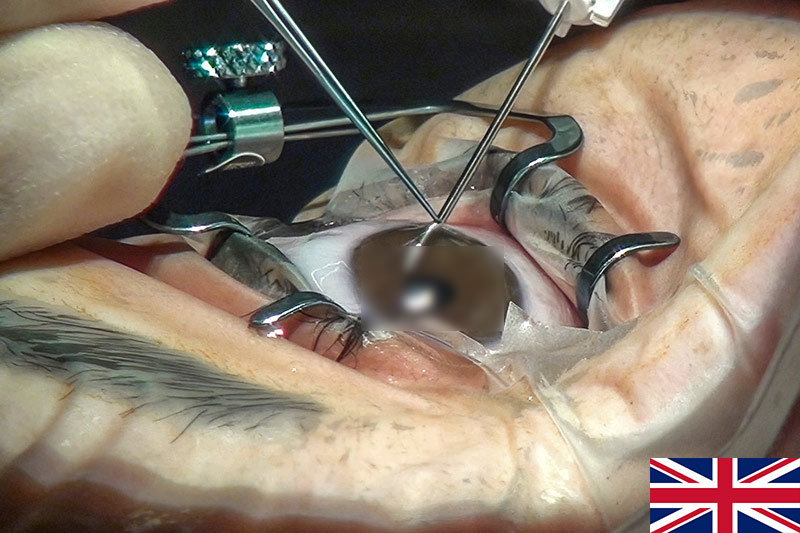Minimally Invasive Glaucoma Surgery (MIGS) Cost in Australia
Minimally Invasive Glaucoma Surgery (MIGS) is a breakthrough approach for patients who need effective intraocular pressure control with faster recovery and fewer complications. In Australia, MIGS procedures are increasingly chosen over traditional surgeries like trabeculectomy or tube shunts due to their safety, convenience, and long-term effectiveness.
These procedures aim to reduce intraocular pressure (IOP) and slow down the progression of glaucoma while minimizing risks commonly associated with conventional methods.
How MIGS Works
MIGS surgeries use microscopic devices and tiny incisions to improve the drainage of aqueous fluid from the eye. Unlike older methods that create large filtering blebs, MIGS procedures enhance the eye’s natural outflow system with minimal trauma.
Common types of MIGS performed in Australia include:
-
iStent or iStent inject – tiny stents implanted to enhance fluid drainage.
-
Hydrus Microstent – a curved device inserted into Schlemm’s canal.
-
Kahook Dual Blade (KDB) goniotomy – removes a small portion of tissue to improve outflow.
-
XEN Gel Stent – a soft implant that creates a new drainage pathway.
These procedures are typically performed under local anesthesia and may be combined with cataract surgery for enhanced results.
Average MIGS Cost in Australia
The cost of MIGS in Australia varies depending on the procedure type, surgeon experience, and hospital setting (public or private).
Typical cost breakdown:
-
Public hospitals: May be covered by Medicare, though eligibility and waiting times differ.
-
Private hospitals or clinics: Range between AUD 2,800 and AUD 5,000 per eye, including surgeon, anesthetic, and hospital fees.
Additional costs may apply for diagnostic tests, follow-ups, or premium implants. MIGS is considered a cost-effective option for patients who need long-term pressure control without frequent medications.
👉 Read more about statewide differences in glaucoma care costs.
(https://glaucoma.ph/glaucoma-surgery-cost-australia-sydney-melbourne-2025/)
Benefits of Minimally Invasive Glaucoma Surgery
MIGS procedures are designed for safety, precision, and quicker healing. Compared to conventional glaucoma surgery, patients experience:
-
Shorter recovery times
-
Lower risk of infection and complications
-
Less postoperative discomfort
-
Smoother integration with cataract surgery
-
Reduced dependence on glaucoma eye drops
These advantages make MIGS an ideal choice for patients with mild to moderate glaucoma who wish to maintain daily activities with minimal interruption.
Recovery and Aftercare
Most patients can resume normal activities within a few days to one week after MIGS surgery, though eye protection and proper care are essential during the initial healing phase.
Post-surgery, your ophthalmologist will provide specific instructions and prescribe anti-inflammatory eye drops to control swelling and infection. Regular follow-up appointments are crucial to ensure stable eye pressure and implant function.
Typical aftercare advice:
-
Avoid heavy lifting or bending for the first week.
-
Keep water and soap away from the operated eye.
-
Do not rub your eye or wear contact lenses until cleared by your doctor.
-
Attend all scheduled check-ups to track your eye pressure and healing progress.
MIGS vs. Traditional Glaucoma Surgery
| Aspect | MIGS | Traditional Surgery |
|---|---|---|
| Incision Size | Very small (micro-scale) | Large (macro-scale) |
| Recovery Time | 1–2 weeks | 4–6 weeks |
| Risk of Complications | Low | Moderate to high |
| Hospital Stay | Usually outpatient | Often longer |
| Best for | Mild to moderate glaucoma | Advanced or resistant glaucoma |
While MIGS may not completely replace more invasive surgeries, it offers an excellent middle ground between medical therapy and traditional filtration surgery.
Is MIGS Covered by Insurance or Medicare?
In Australia, Medicare and private health funds may cover part or all of the MIGS surgery cost, especially if it is deemed medically necessary. The level of coverage depends on your insurance plan, the chosen implant, and whether the surgery is performed in a public or private hospital.
Patients should confirm coverage details with their ophthalmologist and insurance provider before proceeding.
Choosing the Right MIGS Surgeon in Australia
Selecting an experienced glaucoma specialist is key to achieving optimal results. Surgeons who specialize in MIGS procedures can recommend the best implant and surgical method based on your eye condition and treatment goals.
Major Australian cities—Sydney, Melbourne, Brisbane, Perth, and Adelaide—have top-tier eye clinics and hospitals equipped with the latest MIGS technology and diagnostic systems.
Final Thoughts
Minimally Invasive Glaucoma Surgery (MIGS) represents a significant advancement in glaucoma care, offering effective pressure control with reduced risks and downtime. Although MIGS cost in Australia varies by location and device, it remains an affordable, safe, and lasting solution for many glaucoma patients.
For those seeking to balance cost, comfort, and results, MIGS surgery provides an excellent alternative to traditional glaucoma operations—helping preserve vision while maintaining a high quality of life.




